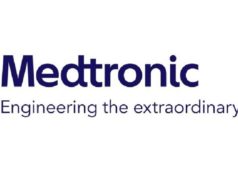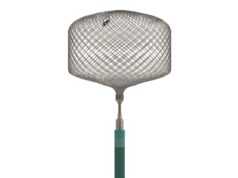This advertorial is sponsored by Medtronic.

Whether or not patients implanted with spinal cord stimulation (SCS) technologies can undergo a magnetic resonance imaging (MRI) scan—in other words, whether such devices can be considered ‘MR conditional’—relates to the safety and overall applicability of the given system, and therefore represents a nuanced yet vital issue. Here, clinical scientist Peter Wright (Plymouth, UK) and consultant pain specialist Cormac Mullins (Cork, Ireland) discuss how technical considerations, nomenclature and guidelines relate to these debates.
“MRI is increasingly becoming the gold standard across the board for diagnosis and detection of diseases like cancers and stroke—it’s hugely beneficial as an imaging modality,” Wright explains. “And, for those patients with any implant—let alone neurostimulators or other electronic devices like cardiac pacemakers—there is always a risk with undergoing an MRI, to the point that patients with certain medical devices are completely contraindicated. Patients with an ‘MR-conditional’ device can undergo these procedures but under very safe, strict conditions that must be followed and are defined by the device manufacturer.
“The importance of being able to offer that relates to equity—it’s being able to say that we can provide the same imaging and diagnostic opportunities to all patients, whether or not they have an implant, such as a neurostimulator.”
The criteria under which certain implanted devices may be deemed ‘MR conditional’ could involve controlling or limiting the rate at which the patient’s body absorbs energy during the MRI scan, the presence of a specialist team to programme the device in order to reduce safety risks, or specialised equipment capable of providing adequate physiological monitoring, during a scan. However, as Wright avers, many smaller or mobile imaging facilities will not be able to accommodate these additional requirements, limiting patient access to MRI scans at the ‘point of care’.
Alluding to relevant examples where this restricted access can be particularly problematic, Mullins highlights two time-sensitive contexts—cauda equina syndrome, for which an MRI scan is needed to diagnose the disorder and facilitate urgent surgery, and acute stroke, an emergent condition for which diagnostic MRI is the gold standard. “Unfortunately, that’s where issues over MRI access come into play,” he adds. “Some centres are bigger and more used to dealing with spinal cord stimulators, but others aren’t—and, as soon as they hear ‘SCS’, they get scared.”
MRI and SCS
“One device’s MR conditions won’t necessarily be the same as another’s, and you can see that in spinal cord stimulators, with different manufacturers having different MR conditions in order to be able to safely scan their device,” Wright states.
On this front, a highly relevant characteristic of Medtronic’s Inceptiv family of SCS systems pertains to lead impedance. Wright comments that, while the MR conditions of some stimulators stipulate that impedance must be measured immediately before scans to detect potentially dangerous lead fractures, Medtronic’s tantalum lead-shielding feature disperses excess heat and allows ‘out-of-range’ electrode impedances to be scanned safely—removing the need for these burdensome tests. This is a key factor in maintaining a patient’s MRI access as, once they have switched their spinal cord stimulator to ‘MRI Mode’, Medtronic’s SureScan technology ensures that the device can be scanned without any impedance-related restrictions or risks of thermal tissue damage created by lead fractures. Additional benefits of this technology include the ability to perform a scan regardless of the SCS device’s charge levels, and with the patient in the prone position, as is required for an MRI intended to detect breast cancers. Wright and Mullins are in total agreement over the fact that, as the latter puts it, “some devices are more MR conditional than others”.
“And, MR conditionality is not a binary label,” Wright notes, suggesting that the concept of an SCS device being amenable to MRI is more of a broad spectrum than a simple ‘yes-or-no’ answer.
“‘MR conditional’ is a catch-all term, but there are so many conditions that you can have,” Mullins adds. “The one I’ve touched on in this article is impedance— if impedances are elevated, that is a potential hurdle to undergoing an MRI. And, in something like an emergency setting, it becomes a major hurdle.”
The research Mullins alludes to here was published in Pain Practice in late 2023, and—based on a single-centre, retrospective review of 363 UK patients implanted with SCS systems from Abbott, Boston Scientific and Nevro—concludes that these MR-conditional devices may ultimately become ineligible for an MRI due to impedance-related issues. In the study, 18.5% of patients implanted with Nevro, Boston Scientific or Abbott devices had leads with at least one contact impedance >10,000Ω at an average of 2.25 years follow-up, while the risk of lead impedance failure increased by 35.4% with each successive year and peaked at 43% of patients with impedance failure at five years post-implant. Conversely, Medtronic’s SureScan technology carries a 0% risk of MRI access being lost over time due to high electrode impedances.
Due to the fact that elevated impedance in certain MR-conditional SCS devices results in a potential loss of eligibility to undergo an MRI scan, Mullins and his co-authors conclude that, “if future MRI is likely, patients and clinicians should consider implanting impedance-independent [Medtronic SureScan] MR-conditional systems, and possible failure of MR conditionality should be routinely incorporated into patient consent prior to implant”.
“The consequences of [elevated lead impedances],” Mullins tells NeuroNews, “are delayed diagnosis— potentially in an emergency setting—and treatment delays, which could make a huge difference to the clinical outcome, and also a potential device explant to facilitate an MRI in less urgent settings like cancer or progressive neurological deterioration.”
Here, Mullins reiterates his description of Medtronic’s SCS technologies as ‘impedance-independent’, adding that they boast MRI access that is “effectively guaranteed” to the patient, therefore also alleviating many concerns clinicians may have over MR conditionality with other systems.
Shifting guidelines
Another point on which Wright and Mullins are aligned is the flawed notion of ‘MR compatibility’—with Wright describing this phrase as “one of the banes of my life”, as it implies, incorrectly, that these delineations are binary between ‘compatible’ and ‘incompatible’. “MR compatible doesn’t exist in my language, and it shouldn’t really exist in anyone’s language,” he says. “There are only three statuses: ‘MR safe’, ‘MR conditional’ and ‘MR unsafe’. But, I still hear ‘MR compatible’ being bandied around and, if I could remove that from the English language, I would.”
On this matter, Mullins makes reference to a 2020 paper published in Neuromodulation, entitled, ‘A comprehensive practice guideline for magnetic resonance imaging compatibility in implanted neuromodulation devices’, echoing Wright’s views on the problematic nature of defining SCS systems as ‘MR compatible’, and noting that the aforementioned guideline does not specify “many of the things that we have discussed”, nor does it define or even mention the relevance of impedance measures. “We have both recommended that there should be a more up-to-date guideline that includes specific guidance on delineating between the different devices that are conditional—and what ‘conditional’ really means,” Mullins says.
Returning to Wright’s assertions on MRI evolving into the gold-standard modality across many pathologies, Mullins adds that rates of these scans are “going through the roof”, before also commenting that the proportion of SCS-implanted patients who will require an MRI in the future is “close to 100%”.
The data he references here stem from a 2015 analysis published in Spine, which projects that up to 84% of SCS patients can be expected to need at least one MRI scan within five years post-implantation—a figure that rises to 98% after 10 years. And, when these decade-old findings are considered in conjunction with National Health Service (NHS) England data cited by Wright suggesting that MRIs across the UK increased by 73.6% from 2012–13 to 2022–23, with an annual growth of roughly 6.5%, the ever-growing significance of MR-conditional implants becomes even more apparent.
“I became involved in this area because, in clinical practice, we observed that this was becoming a big issue: patients implanted with MR-conditional devices had their device interrogated, and their impedances were elevated and they could no longer have an MRI,” Mullins explains. “We saw so many of these patients that could not have an MRI and, when we looked at the literature, there was nothing published on it.”
Mullins states that, despite a handful of more recent publications, this remains an “underrepresented” area within the current literature—placing an onus on clinicians and scientists to produce a greater body of research, and on device manufacturers to improve the quality of their MRI access. Wright and Mullins both ultimately feel that, moving forward, updated guidelines should give healthcare providers and patients alike improved clarity on the definitions and importance of MR conditionality when it comes to SCS devices.
“Ideally, we would go through the literature to profile the safety studies that are out there and try to provide clinicians with a practice algorithm for this—a common guideline that isn’t specific to the manufacturer—and join up all of the evidence to create clearer criteria on circumstances in which it’s safe, or high-risk, or unsafe, to undergo an MRI,” Mullins concludes.
DISCLAIMERS:
The contents included in this interview express only the clinical perspective of the presenters; they are completely independent and do not necessarily reflect the opinions of Medtronic.
This material should not be considered the exclusive source of information, it does not replace or supersede information contained in the device manual(s). Please note that the intended use of a product may vary depending on geographical approvals. See the device manual(s) for detailed information regarding the intended use, the implant procedure, indications, contraindications, warnings, precautions, and potential adverse events. For an MRI compatible device(s), consult the MRI information in the device manual(s) before performing an MRI. If a device is eligible for eIFU usage, instructions for use can be found at Medtronic’s website: manuals.medtronic.com. Manuals can be viewed using a current version of any major internet browser. For best results, use Adobe Acrobat® Reader with the browser. Medtronic products placed on European markets bear the CE mark and the UKCA mark (if applicable). For any further information, contact your local Medtronic representative and/or consult Medtronic’s websites.









